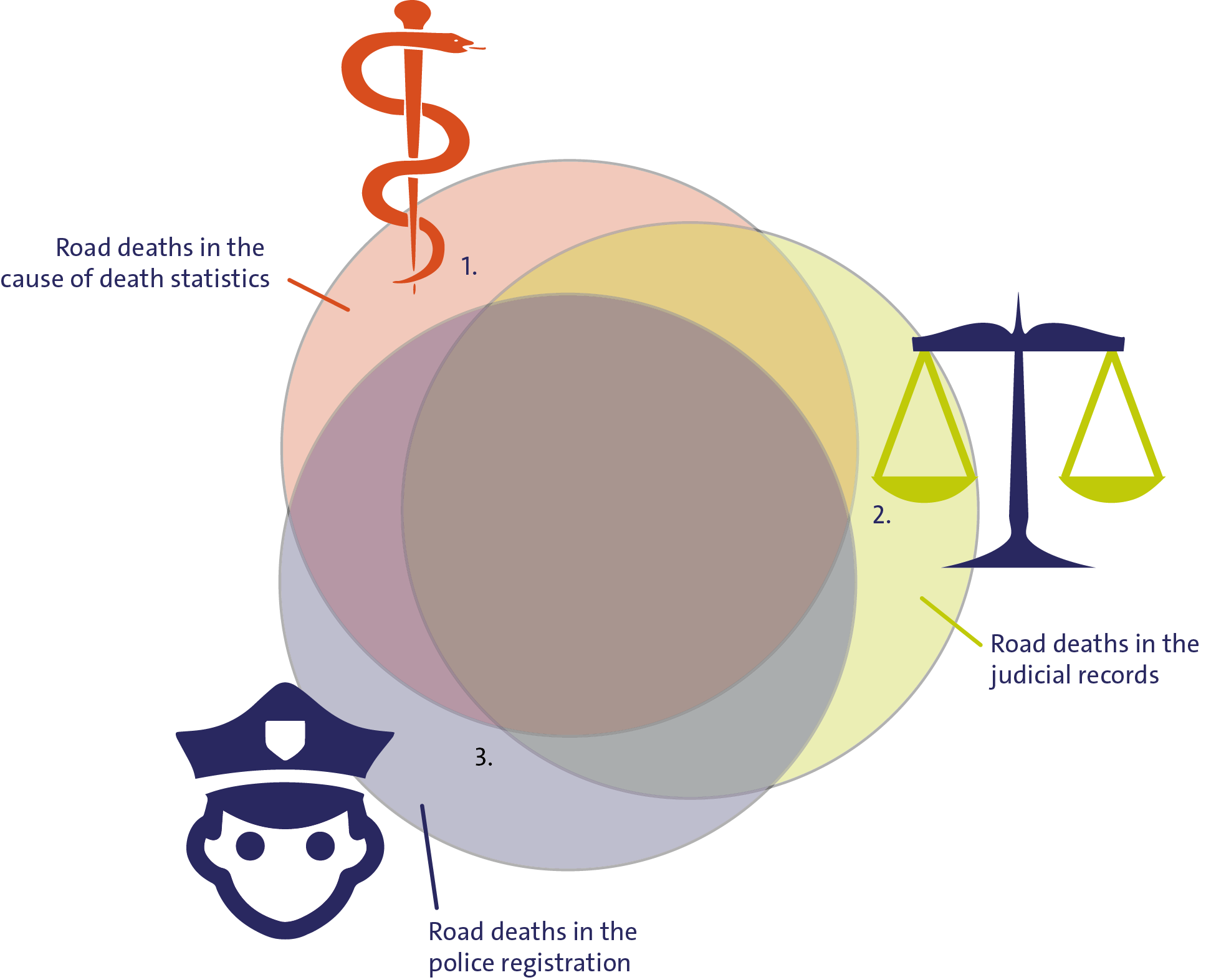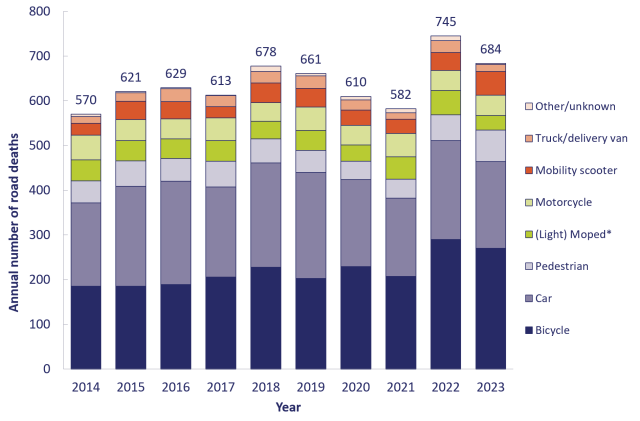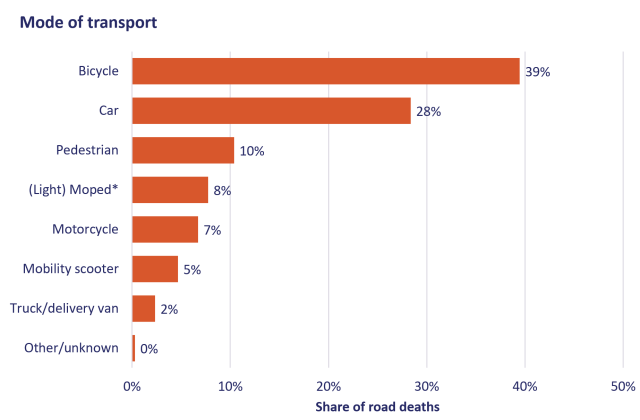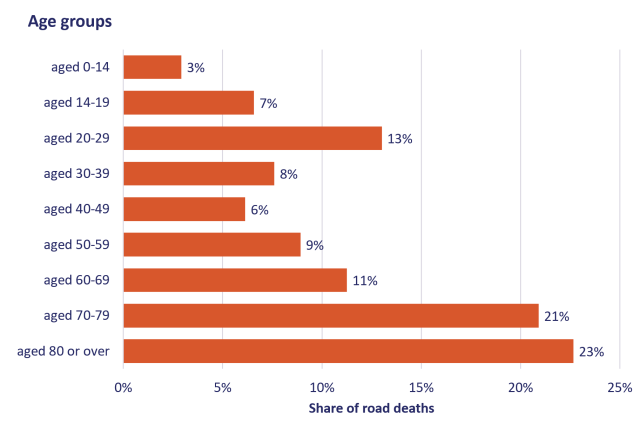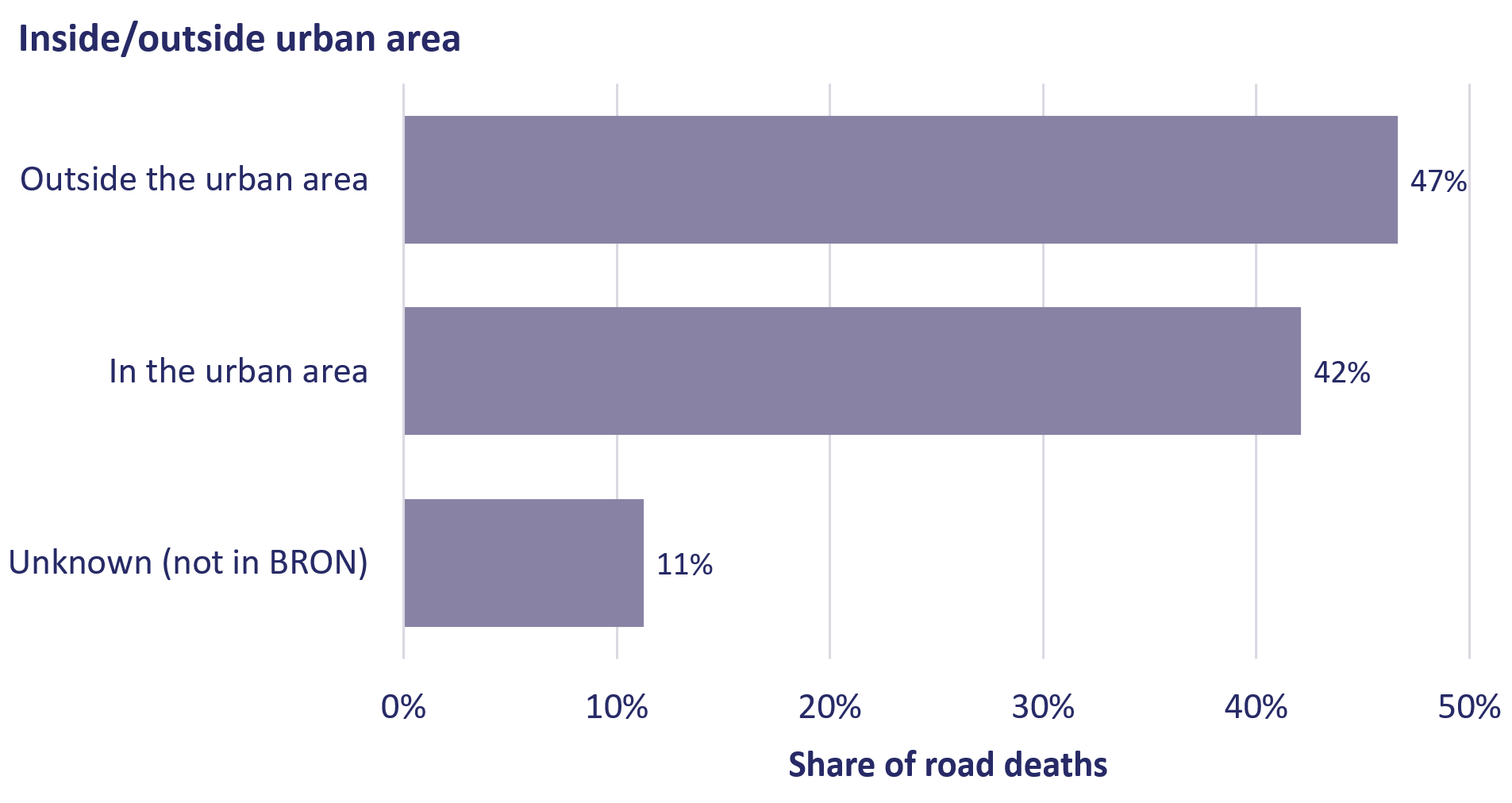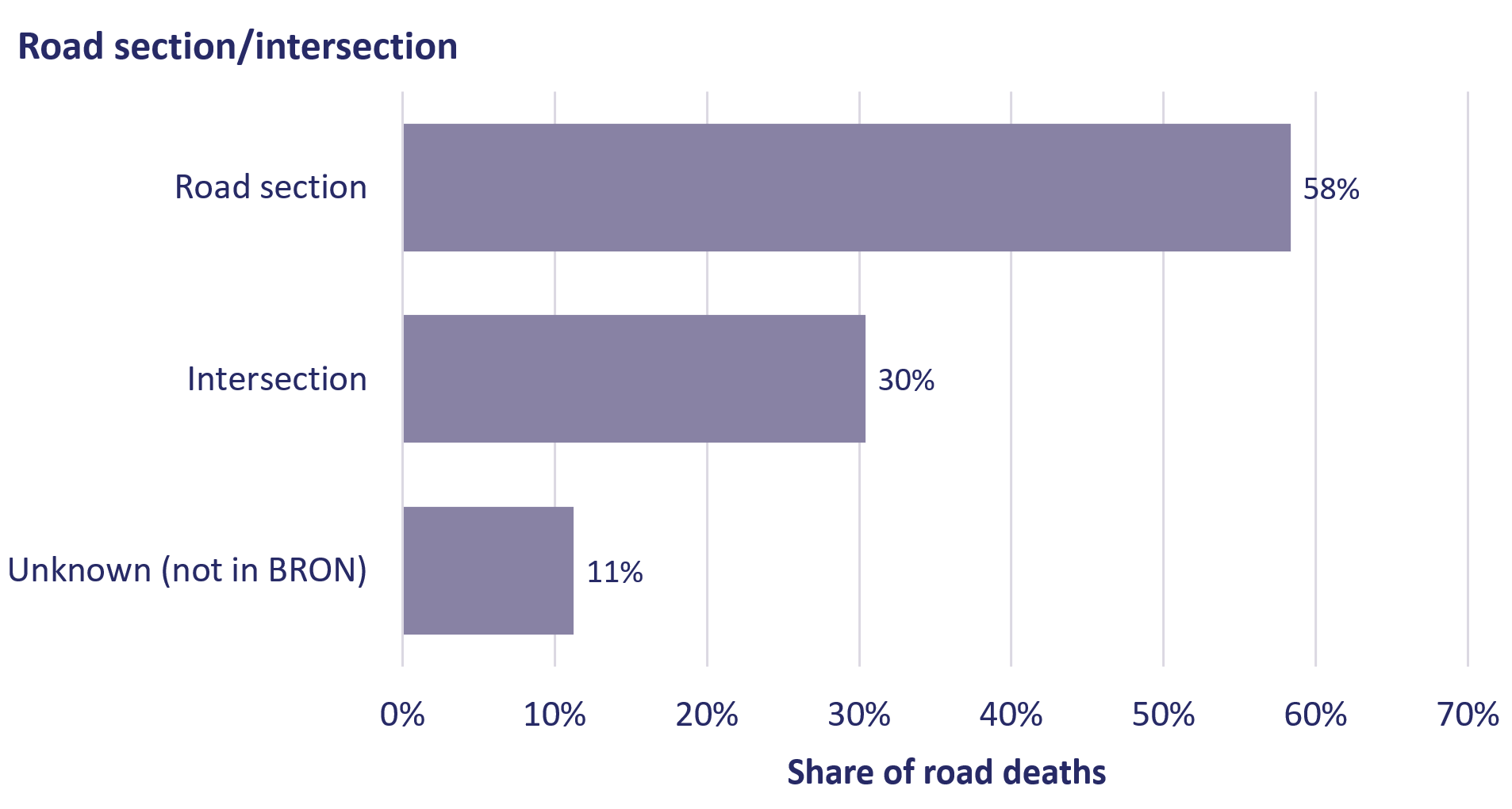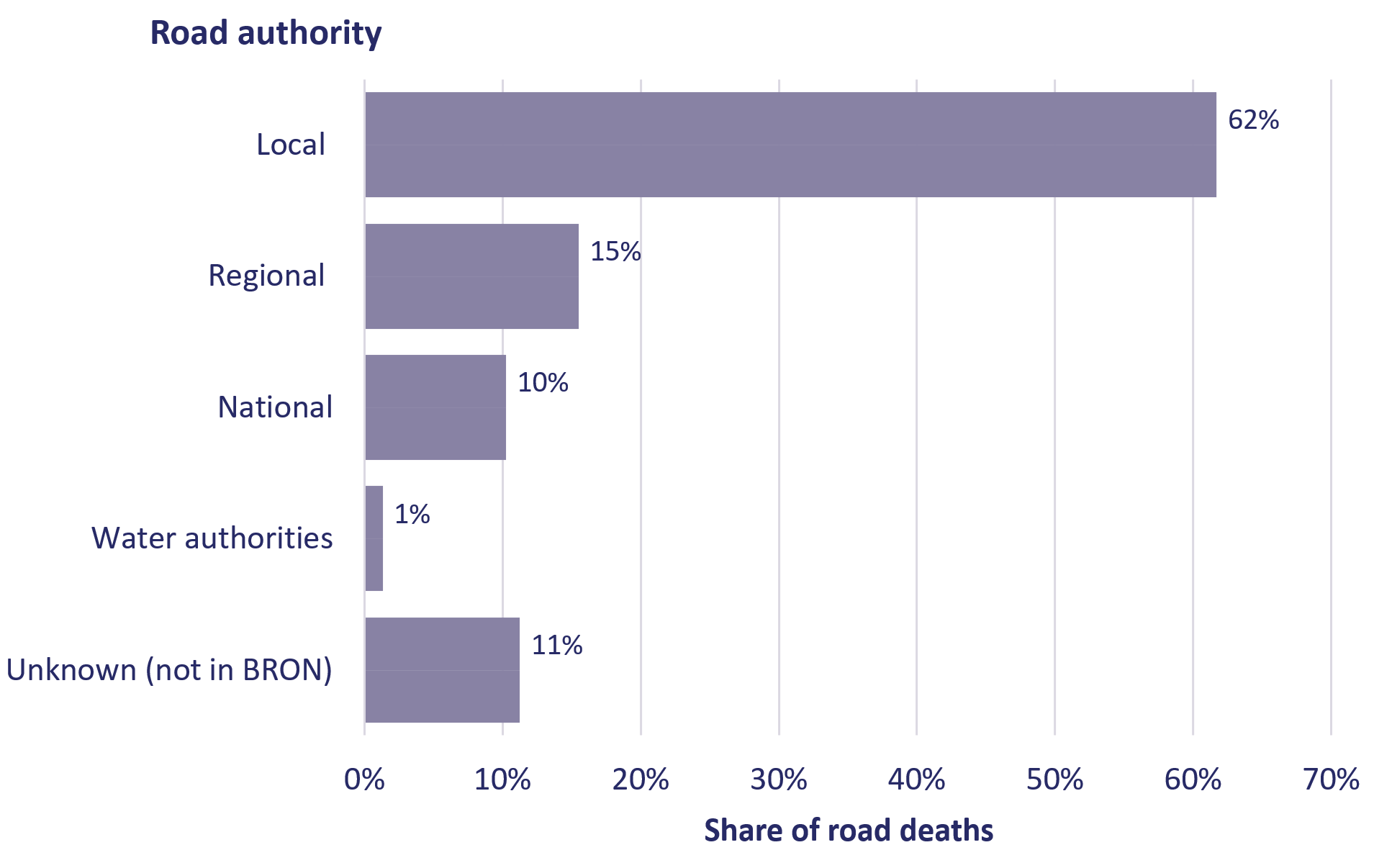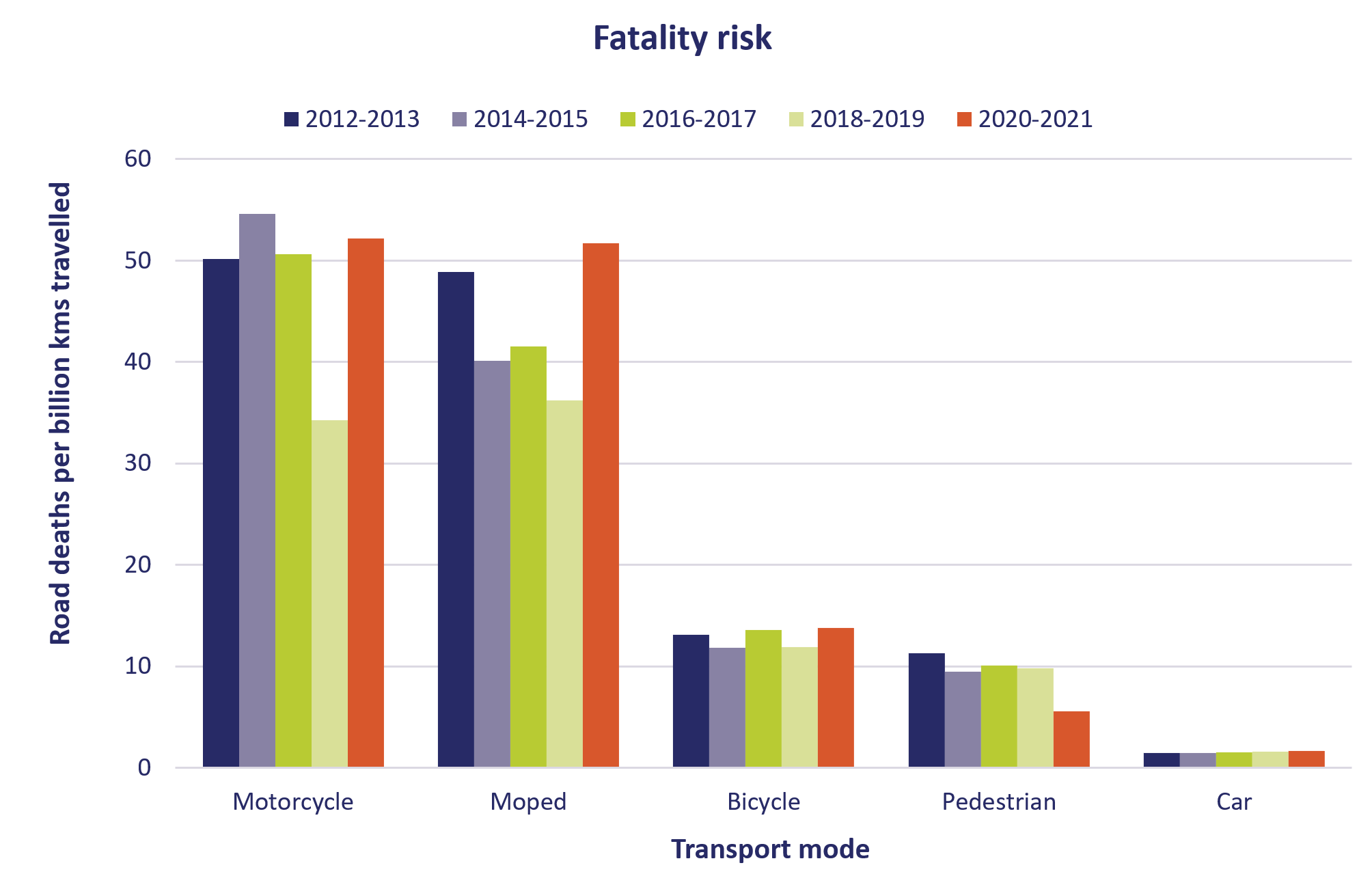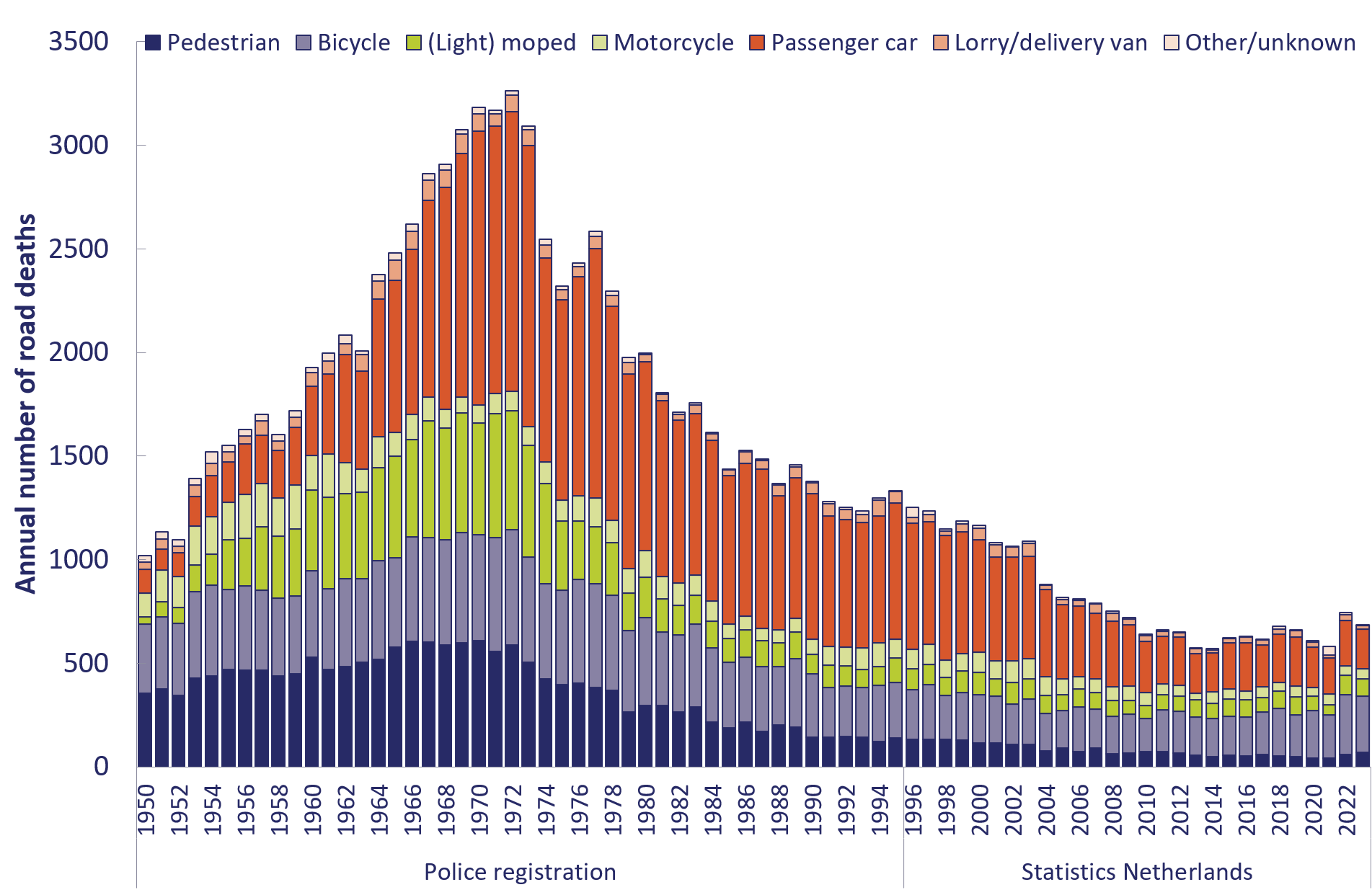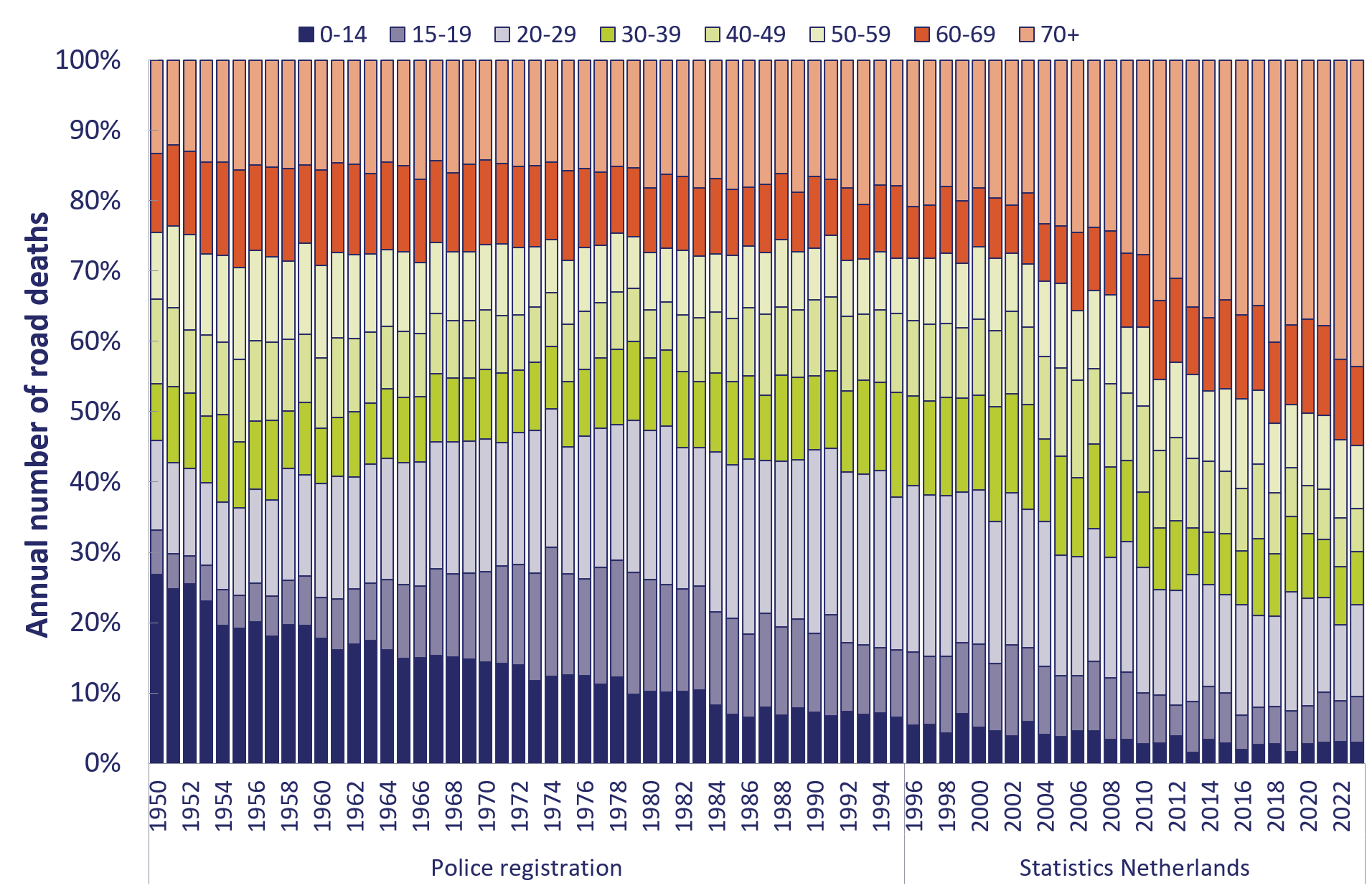Below you will find the list of references that are used in this fact sheet; all sources can be consulted or retrieved. Via Publications you can find more literature on the subject of road safety.
[1]. European Commission (2016). CARE database CADaS. Directorate General for Mobility and Transport. European Commission, Brussel.
[2]. CBS (2019). Begrippen. Lijst met begrippen die CBS hanteert in zijn statistieken. CBS. Accessed on 25-10-2020 at https://www.cbs.nl/nl-nl/onze-diensten/methoden/begrippen?tab=v#id=verkeersdode.
[3]. Bos, N.M., Temürhan, M., Stipdonk, H.L. & Aarts, L.T. (2023). Registraties van verkeersdoden in Nederland. Hoe verhouden verschillende bronbestanden zich tot elkaar? [Road death registration in the Netherlands. Comparing the different source files] R-2023-3 [Summary in English]. SWOV, Den Haag.
[4]. Aarts, L.T., Broek, L.J. van den, Oude Mulders, J., Decae, R.J., et al. (2022). De Staat van de Verkeersveiligheid 2022. Trend in aantal verkeersdoden en -gewonden daalt niet. R-2022-10. SWOV, Den Haag.
[5]. Aarts, L.T. & Dijkstra, A. (2018). DV3 - Achtergronden en uitwerking van de verkeersveiligheidsvisie. De visie Duurzaam Veilig Wegverkeer voor de periode 2018 – 2030 onderbouwd [Sustainable Safety version 3 – Backgrounds and elaboration of the updated road safety vision. Substantiation of the second advanced Sustainable Safety vision for the period 2018-2030]. R-2018-6B [Summary in English]. SWOV, Den Haag.
[6]. Davidse, R.J., Boele-Vos, M.J., Doumen, M.J.A., Duijvenvoorde, K. van, et al. (2021). Dodelijke verkeersongevallen in Noord-Brabant 2018-2019. Analyse van ongevals- en letselfactoren en daaruit volgende aanknopingspunten voor maatregelen [Fatal road crashes in the Dutch province of Noord-Brabant 2018-2019. Analysis of road crash and injury factors and resulting potential measures]. R-2021-9[Summary in English]. SWOV, Den Haag.
[7]. Davidse, R.J., Duijvenvoorde, K. van & Louwerse, W.J.R. (2023). Dodelijke verkeersongevallen op rijkswegen in 2021. Analyse van ongevals- en letselfactoren en daaruit volgende aanknopingspunten voor maatregelen. R-2023-5. SWOV, Den Haag.
[8]. Wijnen, W. (2024). Verkeersveiligheid in maatschappelijke kosten-batenanalyse. W2Economics, Utrecht.
[9]. Ministerie van VenW (2008). Strategisch Plan Verkeersveiligheid 2008-2020; Van, voor en door iedereen. Ministerie van Verkeer en Waterstaat, Den Haag.
[10]. Council of the European Union (2017). Council conclusions on road safety: endorsing the Valletta Declaration of March 2017. Outcome of Proceedings from the General Secretariat of the Council. 9994/17 / TRANS 252 / 8666/1/17 REV 1 TRANS 158. Council of the European Union, Brussels.
[11]. United Nations (2020). Improving global road safety. A/74/L.86. United Nations, New York.
[12]. Tweede Kamer (2021). Motie van het lid Geurts over een halvering van het aantal verkeersslachtoffers in 2030. Maatregelen verkeersveiligheid 29 398, nr. 946. Tweede Kamer der Staten-Generaal. Accessed on 17-02-2023 at https://www.tweedekamer.nl/kamerstukken/moties/detail?id=2021Z13389&did=2021D28533
[13]. Craen, S. de, Bijleveld, F.D., Bos, N.M., Broek, B. van den, et al. (2022). Kiezen of delen. Welke maatregelen kunnen zorgen voor halvering verkeersslachtoffers in 2030? R-2022-8. SWOV, Den Haag.
[14]. Carson, J., Jost, G. & Meinero, M. (2023). Ranking EU progress on road safety. 17th Road Safety Performance Index Report. European Transport Safety Council ETSC, Brussels.
[15]. EC (2024). Road safety statistics 2023 in more detail. European Commission, Directorate-General for Mobility and Transport. Accessed on 26-03-2024 at https://transport.ec.europa.eu/background/road-safety-statistics-2023_en.
[16]. Adminaite, D., Jost, G., Stipdonk, H.L. & Ward, H. (2018). An overview of road death data collection in the EU. PIN Flash report 35. European Transport Safety Council ETSC, Brussels.

